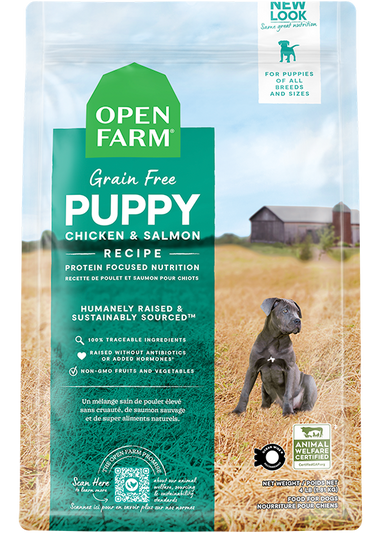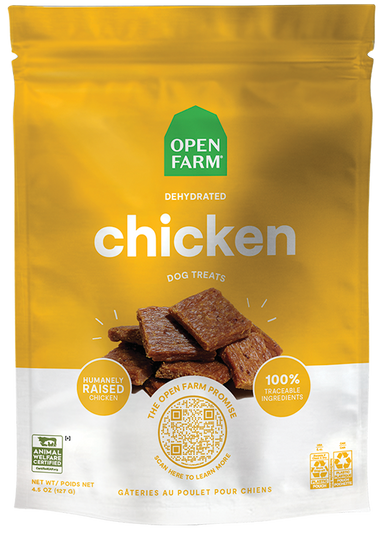Is there anything more exciting than bringing your new puppy home? Your heart swells as you hold that little ball of fur and look into those sweet, trusting eyes, holding all the promise of a new best friend.
But soon, reality sets in. The surprise puddle of pee on the rug, the gnawed legs of furniture, the scratches on your legs and arms. The sooner you get your new pup trained the better!
Help your pup get started on the right foot with these puppy training tips.
Stick to a schedule
Your puppy will adjust much more easily when he has a routine to follow for waking up, eating, and sleeping. If the same thing happens at the same time in the same place every day, everything from their potty schedule to their energy levels will normalize quickly.
For potty breaks, it’s different. Instead of sticking to a schedule, take them out first thing in the morning and then as often as you can throughout the day. Puppies have unpredictable potty schedules, but the more frequently they’re taken out, the more likely it’ll coincide with their urge to pee or poop. And when it does, reward them with a treat to help them get the idea that it should be done outside.
You won’t be able to stick to a routine 100% of the time, and that’s okay. Your pup might have a couple of accidents inside the house before learning to do their business outdoors. Just remember that the more consistent you are in following these puppy training tips, the smoother the transition period will become.
Set the ground rules
Setting the ground rules will help you plan out puppy training. Think about boundaries for your pup. Can they sleep in the bed? Are they allowed on the couch? How many times per day should they be taken out for a walk?
If you live with other people, this is a conversation everyone needs to be part of. Remember that puppy training is all about consistency, so if you have a rule that your family doesn’t follow, the lesson probably won’t stick.
The key here is to not to set the rules in stone, it’s to get everyone to agree to it. The rules can be changed as long as everyone in your household is on-board. But getting a consensus on the basic ground rules can help save a lot of headaches later on.
Use affirmations
Using affirmations consistently is an important part of reinforcing good behavior. You can use “good”, “good boy/girl”, “yes”, or any other positive word. The important thing is to use the same word in the same happy tone whenever your puppy obeys you.
A verbal affirmation is important because it tells your dog what they did right. Timing is absolutely crucial. Say it immediately after your pup’s butt hits the floor when you give the sit command, or right after you feel the leash relax when you tell him to stop pulling, or when they let go of what’s in his mouth when you say leave it.
Rewards and consequences during puppy training
Positive reinforcement is when you give something desirable to reward a behavior. Negative punishment is taking away something desirable to discourage a behavior. Combining the two is among the best puppy training tricks we can give.
To reinforce a good behavior or successful trick, you need a reward that will truly motivate your dog. It can be playtime with his favorite toy or a belly rub, but the most effective reward is a treat. Open Farm’s line of healthy dog treats can grab the attention of even the most easily distracted pup, doing so using only natural, sustainably-sourced ingredients. This delicious and nutritious snack will motivate your puppy to master their tricks in no time!
To discourage bad behaviors, you need to remove something they find pleasant. Puppies thrive on attention, and if they realize that a particular behavior will result in being ignored, they will get the message. When your pup does something you do not like, like barking at an inappropriate time, give a strong and firm “no”, and walk away immediately.
Make an area just for your puppy
Before your puppy arrives, you should already have set aside a space for them. Whether it’s a separate room or a crate in a corner, give them their own sleeping area.
Consider placing most of your pups things here so they understand it’s where they can be comfortable. Ideally, the puppy’s bed, water,food bowls, leash and toys will all be in this corner.
Give your dogtime to be alone in the puppy-designated area for multiple 10-15 minute sessions everyday and reward them when they’re quiet and well-behaved. Gradually you can work this up to 30-minute to hour-long sessions. Having a safe space helps with managing anxiety when you aren’t at home.
No biting or nibbling
Puppies are naturally nibbley as it’s a form of play with their littermates. It’s cute and harmless when they’re small, but they can grow bigger and may not be aware of their strength. As such, it’s better to discourage any biting or nibbling with humans as soon as possible.
If your pup starts roughhousing with you, give a loud shout and immediately walk away. Leave them alone for at least one minute to show that biting will get them nowhere. You’ll have to repeat it for a couple of weeks, but consistent practice will let your pup know that they are not to bite people.
Provide items your puppy can chew on
Puppies use their mouths to explore their world. They also undergo a teething phase when their sore gums need to be soothed with biting. It would be unhealthy (and frankly, impossible) to stop puppies from chewing things, but of course no one wants to live in a home full of damaged furniture. So what should you do?
The best thing to do is to give your pup durable and safe chew toys. Among the best puppy tips is to make sure everything you buy is size-appropriate. Make sure their playthings are not too small to be swallowed,yet not too big that they have difficulty chomping on it.
Make sure to give your puppy a variety of chew toys to keep them interested. Use the toys for playtime and even as a reward for good behavior. This will help them learn that it’s much more fun to chew the toy than your furniture.
Socializing
While playtime with humans is great, it’s still important to give your puppy time to interact with other dogs. This is a development milestone that should ideally start between 2-4 months of age.
Keep note of your dog’s vaccination schedule. If your pup hasn’t had all his shots yet, you can arrange playdates with dogs you know have been vaccinated, dewormed, and protected against parasites. Wait until all their vaccinations have been completed before you bring your puppy to the dog park.
Whenever you bring your pup to meet new friends, make sure all the four-legged animals in attendance are placed on a leash. Take it slow, at a pace that is comfortable with both dogs. Give them time to sniff each other as this is how dogs introduce themselves.
As an owner, you should be familiar with reading dog behavior. Always be observant of your dog’s body language and attitude. Give your dogspace when you see they are not comfortable or are overly excited. Remember that positive interactions are the foundation of good social skills and proper puppy training.
Feeding
The nutritional requirements of a puppy are different from that of an adult dog, so you’ll need to pick an age-appropriate diet and an age-appropriate feeding schedule.
For the first few months, it’s best to feed your puppy three times a day. Small, frequent meals will allow for better digestion, especially since your dog has recently been weaned from their mother’s milk. As your dog grows older, you can switch to twice a day feeding.
Your puppy needs proper nutrients for bone, muscle, and brain development. Open Farm’s Puppy Dry Dog Food fulfills all the dietary needs of growing dogs. This dry dog food is an antibiotic-free, sustainably sourced protein source made from a formula without any fillers, and has DHA to encourage brain development.
If you prefer options other than dry kibble, you can check out other puppy-friendly food from Open Farm. From freeze-dried, to wet food, to gently-cooked, there’s something for every pet parent!
Be gentle, positive, and go slow during puppy training
Whether you’re trying to teach your pup to potty outdoors, to sit on command, or to fetch and return the ball, the principles are the same: patience, consistency, and trust.
Always use positive reinforcement and negative punishment. Frustration is inevitable as your pup develops, but control yourself from using harsh punishment--that is, doing something overly negative to discourage a behavior. This includes hitting or screaming at your puppy. Doing so chips away at the human-dog bond, which is detrimental both of you in the long run.
Instead, focus on reinforcing behavior during your puppy training by providing lots of love, attention, and nutritious treats from Open Farm that keep your furry friend happy, smart, and healthy.
Puppies can be easily distracted, and slow to pick-up training at times, but in their innocent little hearts, you mean the world to them. Employ these puppy tips and tricks with gentleness and patience.
Don’t think of puppy training as a means to an end, but rather, an opportunity to have fun building your relationship with your new best friend!













